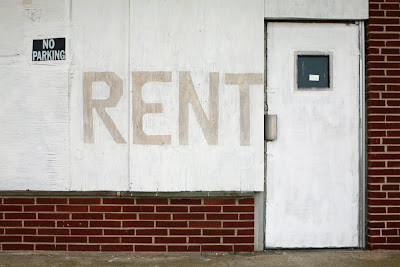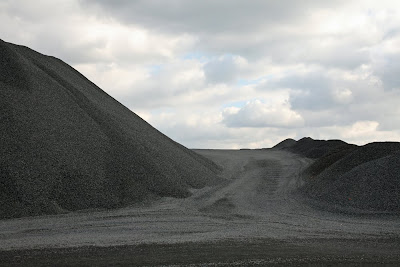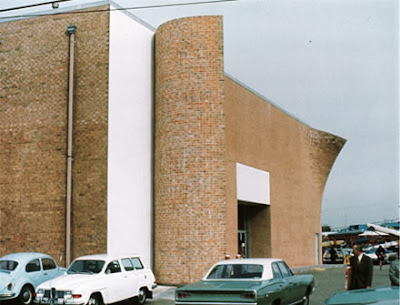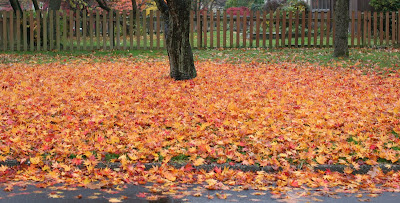 last day of november. 2010
last day of november. 2010



I've been focusing all of my energy and attention on analyzing combinations of images. I think the best way to do this is to lay out prints on a big table. Patterns of subconscious thought emerge that aren't always evident while viewing and working on single images in succession. It is very rewarding to me when a previously undisclosed connection between images suddenly reveals itself right in front of my eyes while I walk around the table.
I never saw the connection between these two images until the prints ended up next to each other on the review table. I've always paired the top photograph with El Dorado Motel and I've been trying to connect the lower photograph with Pharmacy without any real satisfaction or emotional conviction. This new found pairing is really doing it for me.




This topic is something that has captured my interest for a long time and I never seem to be able to translate the visions into a decent result. I see these man made mountain ranges nearly every day in one form or another.
 topographics.01 | 2010
topographics.01 | 2010
 topographics.02 | 2010
topographics.02 | 2010
 topographics.01 | 2010
topographics.01 | 2010 topographics.02 | 2010
topographics.02 | 2010


It occurred to me when I was putting together the three images in the previous post that the white vacant buildings act as economic ghosts, much the same way that ghost bikes represent the death places of unfortunate riders. I never made the connection until last night.
 ghost bike. New York City 2009
ghost bike. New York City 2009
 nowhere, usa. 2010
nowhere, usa. 2010An interesting piece from Learning From Las Vegas. Maybe a partial explanation for the homogeneous mucus trail of today's suburban developments and commercial strips is a socio-political movement towards the elimination of what Robert Venturi refers to as "visual pollution, usually someone else's house or business". We have included the visual pollution of billboards, gas stations, and tacky lawn ornaments as an enemy equal to the likes of water pollution and greenhouse gases. The architectural result of this movement are the tract developments of identical houses and mono-culture landscaping, and strip malls containing the same combination of businesses in every town across America.
"Many people like suburbia. This is the compelling reason for learning from Levittown. The ultimate irony is that although Modern architecture from the start has claimed a strong social basis for its philosophy, Modern architects have worked to keep formal and social concerns separate rather than together. In dismissing Levittown, Modern architects, who have characteristically promoted the role of the social sciences in architecture, reject whole sets of dominant social patterns because they do not like the architectural consequences of these patterns. Conversely, by defining Levittown as "silent-white-majority" architecture, they reject it again because they do not like what they believe to be the silent white majority's political views. These architects reject the very heterogeneity of our society that makes the social sciences relevant to architecture in the first place.As experts with ideals, who pay lip service to the social sciences, they build for Man rather than for people- this means, to suit themselves, that is, to suit their own particular upper-middle-class values, which they assign to everyone".
-Learning From Las Vegas (Venturi, Brown and Izenour)

Levittown: Documents of an Ideal American Suburb
Cloning of the Already Born another possible explanation
The most fantastic pop-architecture of all time are were the Best Stores built by SITE Projects in the 1970's. Sadly, not a single one of the nine stores exists in it's original condition. The last to remain was the Indeterminate Facade Showroom in Houston, but the facade was demolished several years ago. Many of the buildings are completely gone; the others have been converted to Big Box stores.
 Peeling Project.Richmond, VA. 1972
Peeling Project.Richmond, VA. 1972
- from the architect's web site
 Indeterminate Facade Showroom. Houston, TX. 1975
Indeterminate Facade Showroom. Houston, TX. 1975
SITE Best Stores 1970's film about the stores
SITE, Inc architect's web site
 Peeling Project.Richmond, VA. 1972
Peeling Project.Richmond, VA. 1972The Peeling Project showroom was first of nine commercial buildings designed for the BEST Products Company of Richmond, Virginia - a retail merchandiser of hard goods in the USA. Portions of the brick veneer of the facade are peeled away precariously into space, revealing the beyond. This sculptural innovation produces the effect of architecture in a state of tentativeness and instability. By engaging a context of normalcy, this intervention becomes a combination of routine utility with visual ambiguity. Since the project is not about formalist design, it explores the alternative relationships between art and buildings.
The Peeling Project was followed by a series of eight more retail showrooms. Each of these architectural concepts treated the standard "big box" prototype as the subject matter for an art statement. By means of inversion, fragmentation, displacement, distortions of scale, and invasions of nature - these merchandising structures have been used as a means of commentary on the shopping center strip. By engaging people's reflex identification with commonplace buildings, the BEST showrooms also explore the social, psychological and aesthetic aspects of architecture. This approach is a way of asking questions and changing public response to the significance of commercial buildings in the suburban environment.
- from the architect's web site
 Indeterminate Facade Showroom. Houston, TX. 1975
Indeterminate Facade Showroom. Houston, TX. 1975SITE Best Stores 1970's film about the stores
SITE, Inc architect's web site
The Emotional Lens
- An exploration of the emotive and descriptive powers of photography
 larry fink
larry fink
Project Basho
Dec 4-5
Students in this workshop will learn how pictures can become objective and subjective storytelling elements. Participants will explore the meaning of the following quote from Lisette Model: "You are the subject, life is the object" and the workshop will consist of making this search a concrete one. The specific topics covered will be as varied as the people who attend the workshop.
Through a rigorous portfolio review, the workshop will encourage participants to examine their motivations and goals for making new images. Fink will work with participants to learn from their triumphs as well as the tribulations of their visual struggle. This workshop is intended for photographers at all levels that are prepared for a concerted investigation and evaluation of their creative process.
Instructor:
Larry Fink
Under the early tutelage of Lisette Model, developed a unique and offbeat style of empathetic reportage. With his distinct visual and political perspective, he has explored the under-belly of human interaction in all its glory and demise. His celebrated body of work Social Graces was the subject of a solo exhibition at the Museum of Modern Art, New York in 1979, and explores the dichotomies and intricacies of the social circles amongst high-class Manhattanites and the working class of rural Pennsylvania.
The Emotional Lens
- An exploration of the emotive and descriptive powers of photography
 larry fink
larry finkProject Basho
Dec 4-5
Students in this workshop will learn how pictures can become objective and subjective storytelling elements. Participants will explore the meaning of the following quote from Lisette Model: "You are the subject, life is the object" and the workshop will consist of making this search a concrete one. The specific topics covered will be as varied as the people who attend the workshop.
Through a rigorous portfolio review, the workshop will encourage participants to examine their motivations and goals for making new images. Fink will work with participants to learn from their triumphs as well as the tribulations of their visual struggle. This workshop is intended for photographers at all levels that are prepared for a concerted investigation and evaluation of their creative process.
Instructor:
Larry Fink
Under the early tutelage of Lisette Model, developed a unique and offbeat style of empathetic reportage. With his distinct visual and political perspective, he has explored the under-belly of human interaction in all its glory and demise. His celebrated body of work Social Graces was the subject of a solo exhibition at the Museum of Modern Art, New York in 1979, and explores the dichotomies and intricacies of the social circles amongst high-class Manhattanites and the working class of rural Pennsylvania.
The Emotional Lens

The Philadelphia Museum of Art has acquired, through several gifts and a purchase agreement with the Aperture Foundation, the core collection of photographs by Paul Strand, one of the preeminent photographers of the twentieth century.
Full story here
I have always been highly influenced and drawn to the work of Japanese self taught architect Tadao Ando. Some of his work is seen below via photography by Sanghyun Lee


Tadao Ando


Tadao Ando
The end of the rainbow...
I always referred to this place as Rainbow Bar, but I have no idea what it was really known as. Not even sure it had a real name. At the top of each gable were the painted words Topless Go Go. I pass by this building everyday and I have photographed it several times. Never actually set foot inside it. It's been abandoned for several years and just sits there as another blighted eyesore amid the suburban sprawl of Warrington, Pa. My fascination for this place goes beyond it's vacancy and quirky appearance though.

The crazy colors on this historic old building made it different than any other vacant structure I had ever encountered. It's been painted in this wild rainbow color scheme for probably twenty plus years now and I'm sure most people don't know why. Back in the late 1980's the owner of this place wanted to install a sign advertising nude dancing. The place was always kind of a clandestine operation with no exterior indications of what went on inside, and I guess the township tolerated some questionable and grandfathered zoning ordinances as long as the covert ops stayed that way. The building was constructed sometime in the 1700's and from the road looked like any other old and somewhat shabby but charming example of whitewashed Bucks County history.
From what I remember of the media coverage at the time, the owner pressed his issue for full disclosure signage in the court system for several years, and continually got shot down by judge after judge. In a final gasp of eccentric revenge the owner went and had the place painted in it's current garish splendor. The Warrington zoning board prevented a sign that advertised nudity, and in the process ended up with roadside visual obscenity for over twenty years. It is very important to note that during that twenty year time span Warrington morphed from a once mostly rural place consisting of large tracts of farm land that edged the byways of Easton Road, into a mostly continuous sprawl zone consisting of Toll Brothers housing developments, Big Box stores, and never ending shopping centers. There is nary a trace of historic charm left along Easton Road as one drives through Warrington.

I am currently reading Learning From Las Vegas, by Robert Venturi and Denise Scott Brown. Much of the book discusses the relationship of signs to buildings and the ways in which signs became the overwhelming and defining aspect of the Las Vegas architectural landscape, and then migrated to the suburban sprawl commercial strip architecture across America today.
"The sign is more important than the architecture... From the desert town on the highway of the West today, we can learn new and vivid lessons about an impure architecture of communication...If you take away the signs, there is no place."

Driving south on Easton Road today I wasn't thinking about much at all as I came to the red light in front of Rainbow Bar. It took several seconds for my mind to register what I was seeing as I looked at a dull gray building standing at the corner. Dull gray primer colored paint covering every square inch of the Rainbow Bar, and a spanking new sign hanging diagonally off of the Southeast corner. Seems to be a new owner and/or tenant on the premises. I was too stunned to read what the sign said. My brain too busy trying to comprehend the missing colors as the traffic flow pushed me forward.
The remainder of my drive towards Philadelphia consisted of the everyday vulgarity of big sign/little building chaos of the daily autoscape that haunts my every mile. The landscape of no place. I will miss you Rainbow Bar.
I always referred to this place as Rainbow Bar, but I have no idea what it was really known as. Not even sure it had a real name. At the top of each gable were the painted words Topless Go Go. I pass by this building everyday and I have photographed it several times. Never actually set foot inside it. It's been abandoned for several years and just sits there as another blighted eyesore amid the suburban sprawl of Warrington, Pa. My fascination for this place goes beyond it's vacancy and quirky appearance though.

The crazy colors on this historic old building made it different than any other vacant structure I had ever encountered. It's been painted in this wild rainbow color scheme for probably twenty plus years now and I'm sure most people don't know why. Back in the late 1980's the owner of this place wanted to install a sign advertising nude dancing. The place was always kind of a clandestine operation with no exterior indications of what went on inside, and I guess the township tolerated some questionable and grandfathered zoning ordinances as long as the covert ops stayed that way. The building was constructed sometime in the 1700's and from the road looked like any other old and somewhat shabby but charming example of whitewashed Bucks County history.
From what I remember of the media coverage at the time, the owner pressed his issue for full disclosure signage in the court system for several years, and continually got shot down by judge after judge. In a final gasp of eccentric revenge the owner went and had the place painted in it's current garish splendor. The Warrington zoning board prevented a sign that advertised nudity, and in the process ended up with roadside visual obscenity for over twenty years. It is very important to note that during that twenty year time span Warrington morphed from a once mostly rural place consisting of large tracts of farm land that edged the byways of Easton Road, into a mostly continuous sprawl zone consisting of Toll Brothers housing developments, Big Box stores, and never ending shopping centers. There is nary a trace of historic charm left along Easton Road as one drives through Warrington.

I am currently reading Learning From Las Vegas, by Robert Venturi and Denise Scott Brown. Much of the book discusses the relationship of signs to buildings and the ways in which signs became the overwhelming and defining aspect of the Las Vegas architectural landscape, and then migrated to the suburban sprawl commercial strip architecture across America today.
"The sign is more important than the architecture... From the desert town on the highway of the West today, we can learn new and vivid lessons about an impure architecture of communication...If you take away the signs, there is no place."

Driving south on Easton Road today I wasn't thinking about much at all as I came to the red light in front of Rainbow Bar. It took several seconds for my mind to register what I was seeing as I looked at a dull gray building standing at the corner. Dull gray primer colored paint covering every square inch of the Rainbow Bar, and a spanking new sign hanging diagonally off of the Southeast corner. Seems to be a new owner and/or tenant on the premises. I was too stunned to read what the sign said. My brain too busy trying to comprehend the missing colors as the traffic flow pushed me forward.
The remainder of my drive towards Philadelphia consisted of the everyday vulgarity of big sign/little building chaos of the daily autoscape that haunts my every mile. The landscape of no place. I will miss you Rainbow Bar.
 vegas strip. Venturi, Scott Brown Assoc. 1968.
vegas strip. Venturi, Scott Brown Assoc. 1968. I love the never ending process of connection that involves finding new books to read via bibliographies. The majority of books I own have been purchased as a direct result of finding out about them in the further reading section at the back of something I have found to be very influential reading. My books develop a relational context and I find myself reading a half dozen or more simultaneously; reading one and then jumping over to another because the first book triggered a thought that I remember from the second or third, and so forth. Several books I own refer often to Learning from Las Vegas by Robert Venturi and Denise Scott Brown.I already owned a copy of Complexity & Contradiction in Architecture by Venturi, and I always found it a dry and difficult read. But Learning from Las Vegas is written in a different style and I think that is coming from the voice of Denise Scott Brown. Postmodernism explained through the lens of Las Vegas, and it is all making perfect sense to me now!



I always loved this building. It was a laboratory of some kind in Willow Grove, Pa. I loved the minimalist modern architectural style, and the fact that it stood alone among the mostly older vernacular architecture of it's surroundings. It had been vacant for quite some time before I photographed it almost exactly a year ago. I was never happy with this photograph and always meant to go back and shoot it again under better lighting conditions. If I remember correctly this was shot around noon on a very bright day. I never got around to re-visiting this place and before I knew it was sad to see the glass facade had been removed. I assumed they were tearing it down, but soon discovered it was just being remodeled for new tenants. I've written recently about the horrors of cheap and thoughtless takeovers of existing buildings (see Zombie Economics), but this one is a charm to behold. Just as nice, if not better than the original! Kudos to whomever redesigned this building!

Considering the possibility of an influence of classic French garden style on suburban commercial drabiculture...
 feasterville. 2010
feasterville. 2010
 marly le roi. by Erica Lennard 1982
marly le roi. by Erica Lennard 1982
 feasterville. 2010
feasterville. 2010 marly le roi. by Erica Lennard 1982
marly le roi. by Erica Lennard 1982
 popeye's .2010
popeye's .2010I'm thrilled to be notified that for the second year in a row my work will be included in the Missoula Art Museum benefit auction. The exhibit of 76 chosen works opens January 5th and runs through January 30th, 2011. The benefit auction will be held on February 5th, 2011.
MAM Benefit Auction 2011
Subscribe to:
Posts (Atom)












 Farnsworth House. Mies van der Rohe (1951)
Farnsworth House. Mies van der Rohe (1951)




 Barcelona Pavilion. 1929
Barcelona Pavilion. 1929  experience it here. 2010
experience it here. 2010